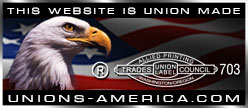May 1, 2025
The Mechanic's Creed is a powerful reminder of AMEs and AMTs immense responsibility in ensuring aviation safety. It underscores the non-negotiable priority of protecting passengers and upholding the industry’s reputation—especially as flight schedules intensify this summer, with utilization increasing and manpower decreasing.
This rising demand tightens turnaround times, heightening the risk of the Safety Management System (SMS), Safety Reporting System (SRS), and Aviation Safety Action Program (ASAP) occurrences, making vigilance and adherence to the creed critical.
About SMS in Canada and the United States
SMS is the formal, top-down, organization-wide approach to managing safety risk and assuring the effectiveness of safety risk controls. SMS is an international best practice for managing system safety; SMS provides a means for a structured, repeatable, systematic approach to identify hazards and proactively manage safety risks. By incorporating SMS, aviation organizations can better develop and implement mitigations that are appropriate to their specific environment and operations. The intent is for the SMS to become part of the culture of an organization and everyday work.
About SRS
The Safety Reporting System is an internal program US Companies use to track safety-related items. (Broken stands, equipment, ladders etc…)
It is Voluntary: Anyone involved in aviation can submit.
It is Confidential: Identifying info is stripped from reports. (Only select personnel are privy to this information)
It is Non-punitive: Reporters are protected from FAA enforcement in most cases (unless it’s criminal, intentional, or involves substance abuse).
It can be anonymous when reporting safety issues, but if you want a follow-up, you must identify yourself in the report. (this information is redacted before it is published).
About ASAP in the United States
The goal of the Aviation Safety Action Program (ASAP) is to enhance aviation safety through the prevention of accidents and incidents. Its focus is to encourage voluntary reporting of safety issues and events that come to the attention of employees of certain certificate holders.
Every maintenance check is a vital opportunity to identify and resolve issues before they escalate—ensuring aircraft can handle extended operations without compromising safety. Cutting corners for efficiency or revenue is not an option. Human lives and the trust placed in our industry are at stake.
The A&P, M1 & M2 License: A Creed of Commitment
The A&P, M1 & M2 license is more than a qualification—it’s a personal vow. It signifies expertise, accountability, and, above all, integrity. This role isn’t just about meeting regulatory standards; it’s about safeguarding every soul that boards an aircraft.
What the Creed Demands of Us
- Resist the rush. Never let pressure compromise precision.
- Verify before you certify. Always double-check logbook entries before signing off.
- Trust the checklist. Never skip a step—even when time is tight.
- Speak up. Reporting issues protects everyone. Silence is not safety.
- Respect the walkaround. Take your time—lives depend on your eyes and hands
Global Aviation Safety Regulations
FAA (United States) – Title 14 CFR:
- Part 43 – Maintenance
- Part 121 – Operating Requirements: Domestic, Flag, and Supplemental Operations
- Part 145 – Repair Stations
Transport Canada- Canadian Aviation Regulations (SOR/96-433)
- Part 101.01 – Operation standards
- Part 571.01 – Maintenance Requirements
- Part 605.84 – Aircraft Maintenance Release for take-off
- Part 726.04 – Maintenance Personnel and Facilities
EASA (Europe):
- Part-M – Continuing Airworthiness
- Part-145 – Approved Maintenance Organizations
ICAO (Global):
- Annex 6 – Operation of Aircraft
- Annex 8 – Airworthiness of Aircraft
Other National Authorities:
- CASA (Australia) – Based on ICAO standards, customized for regional needs
Report Safety Concerns:
FAA Safety Hotline: 1-800-TELL-FAA (1-800-835-5322)
Website: www.faa.gov
https://hotline.faa.gov/

